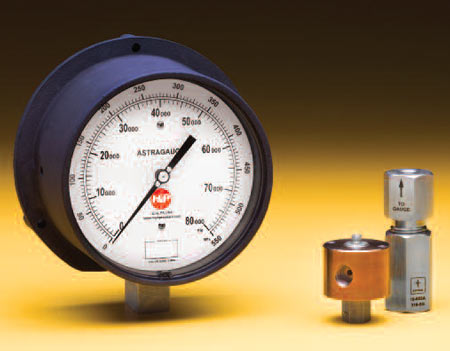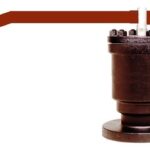A pressure gauge is used to indicate the steam pressure of the boiler. It is also called as steam gauge. It is usually mounted in the front top of the steam drum.

Figure shows a commonly used pressure gauge known as bourdon type. It consists of an elastic metallic bourdon spring tube S of elliptical cross section and bent in the form of circular arc. One end of the tube is fixed at the block B. it is connected to the steam space of the boiler by means of cock C. The other end is connected to a toothed sector T through a link L hinged at the point H. The sector is in mesh with a pinion P fixed on a spindle. An indicating pointer N is attached to the spindle to read the pressure on a dial gauge D.
Working:
When steam enters the elliptical tube, the tube section tries to become circular, which causes the other end of the tube to move outward. The movement of the closed end of the tube is transmitted and magnified by the link and the tooth sector. The magnitude of the movement of the sector is indicated by the pointer on the dial.
Note: Since the spring tube is surrounded by the atmospheric air, the pressure in the interior of the tube is above that of the atmosphere.
Hence absolute pressure = gauge pressure + atmospheric pressure.


